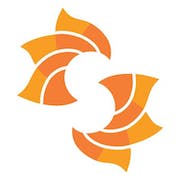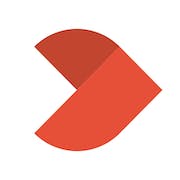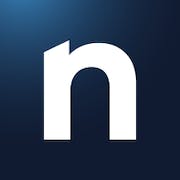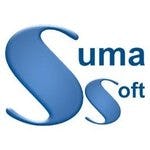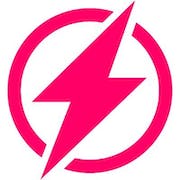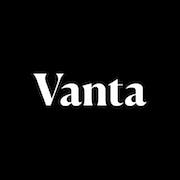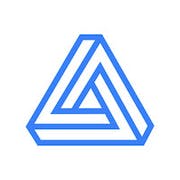As companies continue to grow, so does their reliance on technology. With multiple devices, licenses, and software applications in use across the organization, IT asset management (ITAM) has become incredibly complex. While businesses recognize the need for a software to manage their IT assets, not all are aware of the vast benefits it offers. From reducing costs to ensuring compliance, the solution is a crucial tool for any organization. With multiple providers in the market, choosing the right one can be a daunting task. This guide aims to simplify the decision-making process for you by providing a comprehensive overview of IT asset management software, highlighting key features, and reviewing the leading vendors in the market.
What is IT asset management software?
It is a type of system that manages and tracks all the assets in a company's IT department. It is a solution that helps organizations manage their IT assets, such as hardware, software, and licenses, from a central location. It provides a holistic solution for managing the lifecycle of IT assets and streamlines business operations.
Companies of all sizes and industries can benefit from it; small companies, for example, may use it to manage their limited number of IT assets, while large organizations with multiple locations across the globe may use it to manage thousands of assets at once.
Some of its most common use cases include:
- Inventory management: It helps companies track and manage their IT inventory, including hardware devices, software, and licenses.
- Maintenance management: This tool provides a centralized location to schedule and track maintenance activities for all IT assets, ensuring everything is up-to-date and running smoothly.
- Compliance management: An ITAM system can help companies ensure they are meeting industry regulations and standards, such as ISO and GDPR, by tracking the location, usage, and status of all their IT assets.
- Cost management: This solution allows companies to see the full cost of each IT asset, including purchase price, maintenance costs, and depreciation, making it easier to make informed decisions about asset investments.
- Risk management: By tracking the asset lifecycle, the platform can help companies identify potential security risks, such as end-of-life devices or outdated software, before they become a problem.
What are the benefits of utilizing an IT asset management system?
This technology has become an important asset tracking tool for businesses of all sizes. From software and hardware to cloud services and virtual environments, it enables companies to maintain complete control and deeper visibility of their assets, both in-house and remote. But why is it so critical for businesses? Here are some of its key benefits:
- Cost savings: By maintaining an up-to-date inventory of all IT assets, the organizations can avoid purchasing unnecessary software or hardware and eliminate unnecessary licensing fees. This can result in significant cost savings over time. About 500 technical professionals and executive leaders participated in the 2023 survey—sharing how ITAM improves their audit response, vendor management, and cost savings.
- Enhanced security: It helps businesses identify potential security vulnerabilities and mitigate them with proper updates and automatic patching, more-so offering real-time monitoring on how assets are used, who is using them, and who has access, leading to enhanced security and compliance.
- Better decision-making: Having a complete and accurate inventory of all IT assets provides corporations with valuable data that can be used to support informed decision-making, including budgeting, asset allocation, and risk management.
- Improved productivity: ITAM software simplifies and streamlines asset management processes, freeing up IT staff to focus on more strategic, value-adding tasks. This can improve overall productivity and accelerate digital transformation initiatives.
- Compliance with industry standards: It also helps businesses align with industry standards and regulations, including ITIL, ISO 20000, and SOX compliance.
10 key features of an IT asset management solution
IT asset management (ITAM) software has become an essential tool for managing IT infrastructure. As technology continues to evolve, managing IT assets is increasingly complex and requires more organized solutions. Here are 10 of its common features:
1. Inventory management
It allows businesses to track and manage all their IT assets across various locations, including hardware, software, and cloud services as well as ensuring that all IT assets are accounted for and managed efficiently.
2. Asset discovery
With this program, businesses can identify and discover all their IT assets, regardless of where they are located including providing an accurate and complete view of their IT infrastructure.
3. Software license management
It enables businesses to track the licenses of the software installed across their IT infrastructure. License compliance is essential, and this feature helps to avoid any legal issues associated with unlicensed application usage.
4. Procurement management
The program can streamline the procurement process by automating the purchase process, tracking and managing orders and invoices, and inventory reconciliation.
5. Lifecycle management
It also offers an end-to-end view of IT assets' lifecycle, from procurement to disposal. This feature allows businesses to manage their assets effectively, reducing the chances of wasting resources and lowering costs.
6. Reporting and analytics
ITAM software generates customizable reports on IT assets use, costs, contracts, and other important metrics. This feature enables organizations to analyze their IT infrastructure and make informed decisions.
7. Security management
The application can protect businesses from security risks by tracking and managing the security of their IT assets. This feature can identify vulnerabilities in the system, prioritize security patches and updates, and ensure that IT assets meet compliance standards.
8. User management
It can manage and provide user access controls to the IT infrastructure, reducing the chances of unauthorized access. This feature enhances the security and integrity of the IT environment.
9. Help desk integration
ITAM software can integrate with a help desk, providing businesses with better support services. This feature enables help desk personnel to access up-to-date information about IT assets and respond to issues effectively.
10. Mobile access
It provides enterprises with mobile access to their IT asset information, allowing them to manage assets remotely. This feature enhances efficiency, flexibility, and accessibility.
By adopting this critical tool, different types of firms can keep track of their assets efficiently.
8 main considerations of an IT asset management application
This app has become an essential tool to keep track of digital assets. With the ever-increasing complexity of IT systems, managing hardware and software inventory, licensing, and compliance is now a daunting task for many organizations. This is why businesses should consider purchasing it to reduce costs, improve efficiency, security, and compliance.
When choosing an ITAM solution, there are several factors to consider. Here are some of the most important ones:
- Scalability: The software should be able to handle the organization's current and future needs and as the business grows, it should be able to support more assets, users, and locations.
- Integration: The ITAM solution should integrate seamlessly with the business's existing IT infrastructure, including network management, security, and service desk solutions.
- Automation: To reduce the workload and improve accuracy, the software should automate mundane tasks like discovery, inventory, and reporting. This will free up IT staff to focus on more essential tasks.
- Customization: The platform should be configurable to meet the specific needs of the organization. The ability to customize workflows, real-time alerts, and reports can significantly improve the value of the solution.
- User-friendliness: The users should find it intuitive and easy to use. A complicated interface or a steep learning curve can lead to frustration and reduced adoption.
- Multi-platform support: The system should be able to manage varied hardware and software platforms, including servers, desktops, laptops, mobile devices, and virtual environments.
- Security & software license compliance: It should have robust security features to prevent unauthorized access and data breaches. It should also facilitate compliance with industry regulations and software licensing requirements.
- Cost: It should also provide good value for money. It should offer a reasonable price for its features and capabilities compared to competitors.
Businesses need this technology to stay on top of IT inventory, licensing, compliance, and security. The right solution can help organizations improve efficiency, reduce costs, and stay competitive. Companies should consider the factors mentioned in this guide and by doing so, businesses can make the most out of their IT investment while mitigating risks and enhancing productivity.
Today's trends for ITAM software
IT asset management (ITAM) software has been a critical component of enterprise IT operations for decades. With the increasing adoption of cloud technology, remote work, and the proliferation of devices and applications, its importance is only growing. This year and beyond, we can expect to see several emerging trends in its market.
Trend #1
Firstly, we can expect this technology to increasingly focus on automating tasks that were previously manual. Automating processes such as asset discovery, software installation, and license management not only reduces the workload on IT teams, but it also provides more accurate information for decision-making.
Trend #2
Secondly, we can expect it to play a more significant role in compliance management. It will not only provide data on solution license compliance but will provide greater visibility into security compliance issues as well.
Trend #3
Thirdly, we can expect the emergence of more cloud-based ITAM software solutions. The cloud provides numerous benefits, including lower upfront costs, greater scalability, and easier asset maintenance. Furthermore, cloud-based ITAM solutions can help centralize data from various sources, making it easier to manage IT assets across different locations. When questioned on its IAM direction for 2021, nearly half (47%) of those interviewed by Omdia said they were looking to augment existing IAM implementations, and 42% also said they would be focusing on migrating to the cloud.
Trend #4
Fourthly, we can expect more integration between ITAM software and other enterprise systems. Integration with support desk software, remote management tools, and procurement systems can streamline the IT asset management process and provide greater visibility into IT operations.
Trend #5
Finally, we can expect this technology to incorporate more predictive analytics and AI capabilities. These features can help predict hardware and software failures, anticipate the impact of changes on IT assets, and provide recommendations for optimizing IT resources.
Conclusion
To summarize, as IT environments evolve and grow increasingly complex, the role of ITAM software becomes increasingly indispensable in ensuring the efficient operation of businesses. To meet the demands of this evolving landscape, vendors of this application will persist in innovating and enhancing their solutions with new advanced features and functionalities. Looking ahead to 2024 and beyond, by embracing these advancements, organizations can streamline their IT asset management processes, enhance compliance, optimize resource allocation, and ultimately drive greater operational efficiency and commercial success.


